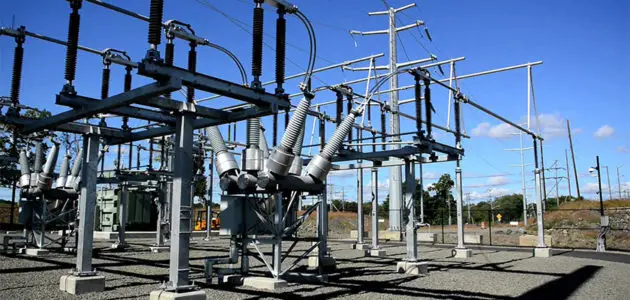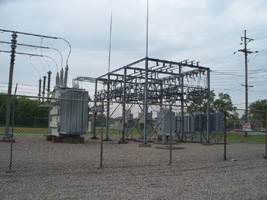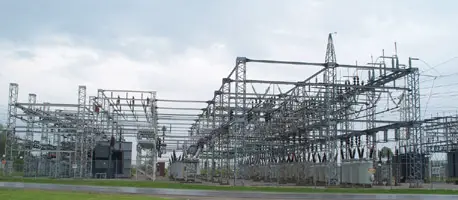Power transmission is the moving of electrical energy from the source to the end user. It includes the transmission substation and the distribution substation.
The installation of new structures and facilities always raises public concerns that need to be addressed. Moving power is one of the issues accompanying renewable energy systems.
Around the world, the mix of power systems varies, but nearly all power is connected to a transmission grid at the source.
Exceptions are some stand-alone renewable systems, including some small wind farms and solar farms. In many cases, the grid has been extended to their locations so they can be connected.
Government agencies are involved in decisions to extend the grid to new locations because such work often crosses private land. In the United States, the agency responsible for these decisions is the Federal Energy Regulatory Commission.
Extending the grid involves expensive investments; in some cases, the cost is slowing down the expansion of new renewable energy production.
For example, a major wind resource is located in the upper Midwest of the United States, but the grid capacity is limited in this area. To exploit this resource, new transmission lines must be installed or sections of existing grid must be expanded to allow for greater power transmission.
Issues surrounding expansion of the grid include land usage and construction of substations and other infrastructure.
Renewable sources typically produce electrical power at much lower voltages than is necessary for transmission. For example, solar PV systems typically have an output of 600 to 1,000 V dc, which needs to be converted to ac and transformed to a much higher voltage for transmission.
All of the issues that accompany new sources and new transmission lines need to be addressed, for example, the environmental issues of the sources and the environmental effects of locating long transmission lines on wildlife because of clearing the land and building access roads.
Electrical Power Substations
A substation is defined as a network of switching equipment, control equipment, and transformers used to convert the voltage to a different level and eventually route it to the user.
At the production site, a transmission substation steps up voltage for transmission; in the area where it will be used, it is stepped down by a distribution substation.
Transmission Substation
Transmission substations use tapped transformers that step up the voltage to a predetermined level. Other components at the transmission substation include various types of switches and relays to control power, as well as a variety of protective equipment such as surge arresters in case of a lightning strike.
Switches for safely disconnecting and grounding lines are used when personnel are working on the lines.
Large, oil-filled or compressed-air circuit breakers are in the line to trip in case line conditions exceed preset limits. Most of this equipment can be controlled and reset from remote locations with telecommunication signals and do not require on-site personnel.
Distribution Substation
At the distribution substation, the same type of equipment is present, but transformers are step-down types. Distribution substations can be used for residential installations and for large industrial plants.
The main difference between a residential substation and a large industrial substation is the voltage and power levels involved.
In most parts of the world, the transformers in residential substations typically have three-phase voltage on their primary side, and they provide single-phase voltage on their secondary side.
Residential transformers use only two of the phases to produce single-phase voltage, so different transformers are wired for different phases to balance power in the three phases.
Industrial Substation
Transformers in an industrial substation supply all three phases (typically at 480 V or more). Figure 1 shows a smaller substation for a residential area; Figure 2 shows an example of a larger substation for an industrial user.
Figure 1 Small Substation for Residential Area Users
Figure 2 Large Substation for an Industrial Complex
Some transformers in both the residential and industrial substation are connected in parallel so that they can share power. In this case, each of the transformers must be similar in size when it comes to voltage and current so that none of the transformers become overloaded.
When transformers are similar in size, they tend to share the load evenly. Control systems monitor the individual load of each transformer and the total load for the substation, and switches are used to isolate transformers or substations when problems occur.
Controlling the Load over Grid Transmission Lines
The grid transmission system has another important job routing electrical power to areas where it is needed. Electrical power consumption changes constantly throughout the day and from day to day. In general, the lowest consumption occurs during overnight hours.
Many industrial users do not use as much energy during the night, and some companies that operate only a day shift use very little power during the night.
Because the grid can move power across several time zones, the control system can move power to an area where it is needed during peak consumption times.
Power is often moved when very high temperatures in an area cause additional power consumption because of heavy air-conditioning use.
Review Questions
- Name two safety components at a substation.
- How are multiple transformers in a substation connected so that they share power?
- What is the main difference between the transformers in transmission substations and distribution substations?
- What is a brownout? What measures can be taken to avoid or eliminate brownouts?
Answers
- Switches for safely disconnecting and grounding lines and large circuit breakers in case line conditions exceed preset limits
- Transformers are connected in parallel so that voltage is the same.
- Transformers for transmission substations are step-up transformers, and transformers for distribution substations are step-down transformers.
- A brownout is a low-voltage condition on the grid; grid operators can remove some larger loads and may be able to reroute power from another sector.


